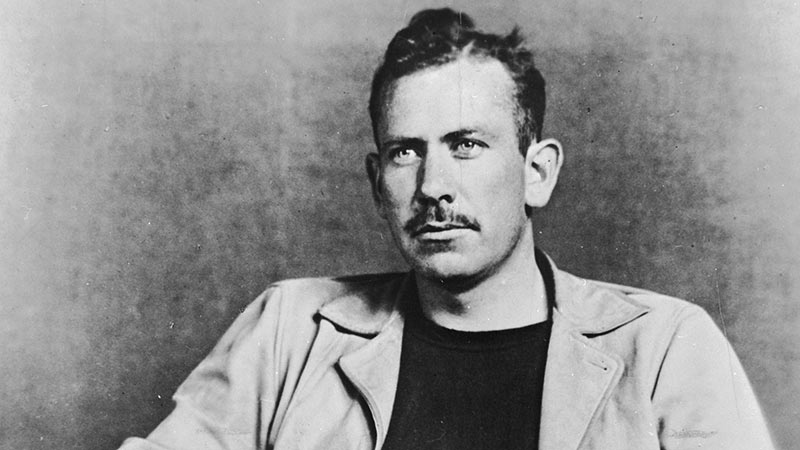In spare and direct prose, John Steinbeck chronicled the lives of American workers striving to survive and retain a sense of humanity while enduring extraordinary hardships in the face of dehumanizing circumstances. Winner of numerous prizes, including the Pulitzer Prize and the Nobel Prize in Literature, he was often criticized for his pessimistic depiction of capitalism, industrialism and materialism.

However there’s no arguing with his stature as one of America’s most important writers: in today’s troubled times, his powerful depiction of the plight of workers during the Great Depression resonates more strongly than ever. Here are a few fascinating facts about this intriguing man and his groundbreaking work.
-
Steinbeck was denied a military commission in World War II because of his sympathies for the labor movement and his friendship with union activists and left-wing journalists and writers. Instead, he covered the war as a correspondent for the New York Herald Tribune.
-
In 1930 Steinbeck met the pioneering marine ecologist, Ed Ricketts, in Monterey. The two men became lifelong friends, sharing an avid interest in marine biology, philosophy and alcohol. They made several important scientific expeditions together, studying and collecting marine life, some of which resides in the collections of the San Diego Museum of Natural History and the Scripps Institution of Oceanography. The ramshackle lab that the outgoing and charismatic Ricketts had on Cannery Row was the scene of numerous freewheeling parties, with guests ranging from local homeless men and prostitutes to Steinbeck and other renowned authors, such as Henry Miller, Joseph Campbell, Lincoln Steffens and composer John Cage.
-
Steinbeck was awarded the Presidential Medal of Freedom in 1964 by President Lyndon Johnson and served as an advisor to Johnson on Vietnam. Originally a supporter of the war, after visiting that war-torn country he recommended a troop withdrawal. ("Steinbeck: A Life in Letters," John Steinbeck. 1952.)
-
"Of Mice and Men" was originally written as a play, winning the New York Drama Critics' Circle Award for best play in 1937-1938. It is also fourth in the list of the ALA’s most challenged (banned) books of the 21st century. (American Library Association).
-
Three-quarters of a million copies of Steinbeck’s works are sold annually, including more than 50,000 copies of "East of Eden." Seventeen of his 27 books have been made into TV or studio movies.
-
As a young man, Steinbeck worked as a field laborer on Spreckels Ranch, owned by the sugar magnate, Claus Spreckels. Claus’s son, John, a real estate and transportation tycoon in San Diego, built the Hotel del Coronado, and owned several railroads and ferry companies and the Union-Tribune. Steinbeck’s experiences on Spreckels Ranch, and the human suffering he saw there, permeate all his work.
-
Take the time to immerse yourself in literature and history in a course with us. The current list of offerings are available on the Humanities section of our website.